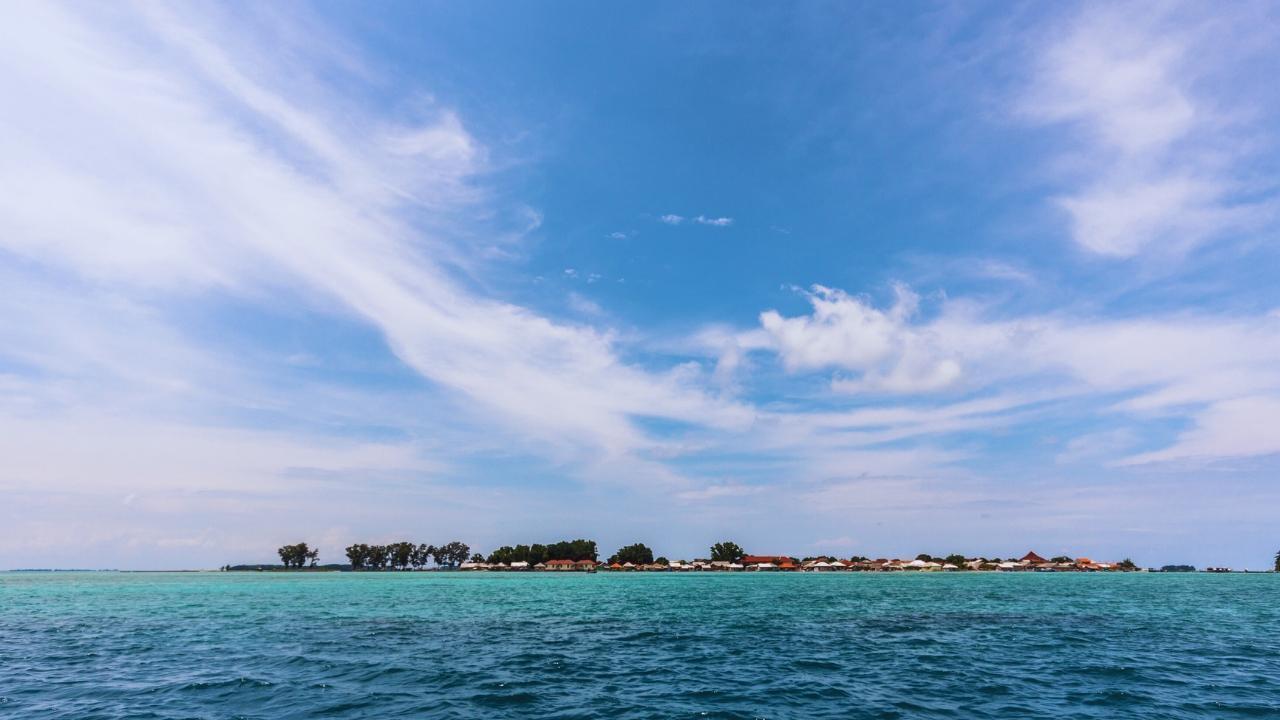
Join 10k+ people to get notified about new posts, news and tips.
Do not worry we don't spam!

Post by : Anis Farhan
Jakarta, Indonesia’s sprawling capital of more than 10 million people, is sinking—literally. Parts of the city are subsiding at an alarming rate of up to 25 centimeters per year, while sea levels in the Java Sea continue to rise due to climate change. By some estimates, 40% of Jakarta is already below sea level, and several northern districts experience routine tidal flooding, even without heavy rain.
In response, Indonesia is moving ahead with one of the most ambitious coastal engineering projects in the world: the Giant Sea Wall, or National Capital Integrated Coastal Development (NCICD) plan. First proposed in 2014, the project has gone through several revisions, funding challenges, and political debates. But in 2025, with new momentum from the national government and foreign partners, the initiative has entered a critical implementation phase.
With construction of the first major barrier underway and feasibility studies for later phases approved, the question now is whether this monumental structure can truly protect Jakarta—or if it’s merely buying time for a city already on borrowed ground.
The NCICD is a multi-phase coastal defense and urban revitalization effort designed to protect Jakarta Bay from sea-level rise and land subsidence. The first phase involves strengthening and raising existing dikes and seawalls along the northern coast—many of which are over 30 years old and no longer effective.
The more controversial second phase centers on building a giant, 32-kilometer offshore sea wall, shaped like a Garuda—the national symbol of Indonesia. The structure would stretch across Jakarta Bay and include massive pump stations, gates, and urban development zones, effectively creating a new outer ring for the city. This artificial island barrier is expected to function both as a flood defense and a foundation for new real estate and economic zones.
Estimated to cost more than USD 40 billion, the full NCICD plan includes residential and commercial developments, wastewater treatment plants, and green spaces—transforming Jakarta’s coast into a futuristic zone modeled loosely on the Netherlands’ delta works.
Jakarta’s flooding problem is driven by a dangerous mix of natural and human factors. Rapid groundwater extraction—especially in areas without piped water—has caused the land to sink dramatically. Poor urban planning, dense population growth, and inadequate drainage infrastructure have worsened the situation.
At the same time, climate change-induced sea level rise has compounded the threat. According to the Indonesian Meteorology, Climatology, and Geophysical Agency (BMKG), sea levels in Jakarta Bay are rising by around 6–7 millimeters per year—faster than the global average.
In 2020, a government study warned that without intervention, parts of Jakarta could be completely underwater by 2050. Regular flooding already affects hospitals, schools, industrial zones, and major transport hubs, including the port of Tanjung Priok.
After a period of delays due to funding gaps and environmental reviews, 2025 has brought significant movement. The first barrier dike, stretching 4 kilometers along the Pluit district, is now under active construction, with co-financing from the Asian Infrastructure Investment Bank (AIIB) and the Japan International Cooperation Agency (JICA).
Environmental impact assessments for the full sea wall structure have been approved under updated regulations, following years of pushback from fishing communities and conservationists. The Indonesian Ministry of Public Works and Housing has confirmed that Phase 2 construction will begin in early 2026, focusing initially on the eastern segment where flooding risk is most acute.
In addition to physical infrastructure, the government is investing in digital flood monitoring, using sensors and satellite data to track water levels, rainfall, and subsidence in real time.
Despite renewed progress, the Giant Sea Wall remains highly controversial. Environmental groups argue that large-scale reclamation could damage marine ecosystems, especially mangroves and fish breeding grounds. Coastal communities fear displacement and loss of traditional livelihoods, as fisheries face potential restrictions due to altered tides and port access.
There are also economic risks. Critics warn that the high cost of the sea wall could divert resources from more sustainable, decentralized flood management strategies—such as upstream reforestation, river dredging, and improved urban drainage.
Moreover, engineering experts caution that unless groundwater extraction is halted, subsidence will continue—and eventually, even the strongest sea wall could be rendered ineffective.
In response, Jakarta’s administration has started rolling out mandatory piped water connections, especially in north Jakarta, and offering incentives for businesses and households to reduce well usage. Still, enforcement remains patchy, and changing behavior at scale will take time.
One of the biggest strategic dilemmas facing Indonesia is whether to continue investing in defending Jakarta or to accelerate the relocation of the national capital to Nusantara, the new administrative center being built in East Kalimantan.
Nusantara, launched in 2022, is designed as a smart, climate-resilient city. However, Jakarta remains the country's economic, financial, and cultural heart. Most businesses, embassies, and institutions are still based in the capital, and over 30 million people live in the Greater Jakarta area.
As such, the sea wall is not just an engineering solution—it’s a political statement that the government is not abandoning its current capital. Officials insist that Jakarta and Nusantara can coexist, with the former continuing as the economic engine while the latter becomes the administrative brain.
If successful, Jakarta’s sea wall could serve as a global model for urban resilience in the face of climate change. Cities like Manila, Dhaka, Lagos, and even parts of Miami face similar threats from rising seas and land subsidence.
But success will require more than concrete and steel. It will demand inclusive planning, ecological balance, behavioral change, and sustained political will across decades.
Jakarta is betting that it can engineer its way out of a slow-motion disaster. The world is watching—because what happens here may soon be everyone’s challenge.
This article is for informational purposes only. It does not constitute engineering, environmental, or investment advice. Readers are encouraged to consult official project documents and experts for the latest updates.










Zohran Mamdani Clinches NYC Mayoral Seat as Victory Speech Blends Politics and Bollywood
Zohran Mamdani won New York City's mayoral race, becoming the city's first Muslim and South Asian ma

India Wins First Women’s World Cup 2025 Title
India lifts its maiden Women’s World Cup 2025 title! Harmanpreet Kaur’s team stuns South Africa in a

Manuel Frederick, 1972 Olympic Bronze Goalkeeper, Dies at 78
Manuel Frederick, a member of India’s 1972 Olympic bronze hockey team, has died in Bengaluru at 78 a

Muhammad Hamza Raja Wins IFBB Pro Card Puts Pakistan & UAE on Global Stage
Pakistani bodybuilder Muhammad Hamza Raja earns IFBB Pro Card in Czech Republic, showcasing Dubai’s

Shreyas Iyer’s Recovery Underway After Spleen Laceration in Sydney ODI
Shreyas Iyer is recovering after a spleen laceration sustained while taking a catch in the Sydney OD

Qatar Ready to Host FIFA U-17 World Cup 2025 in Aspire
Qatar confirms full readiness to host the FIFA U-17 World Cup 2025 from November 3–27, with world-cl